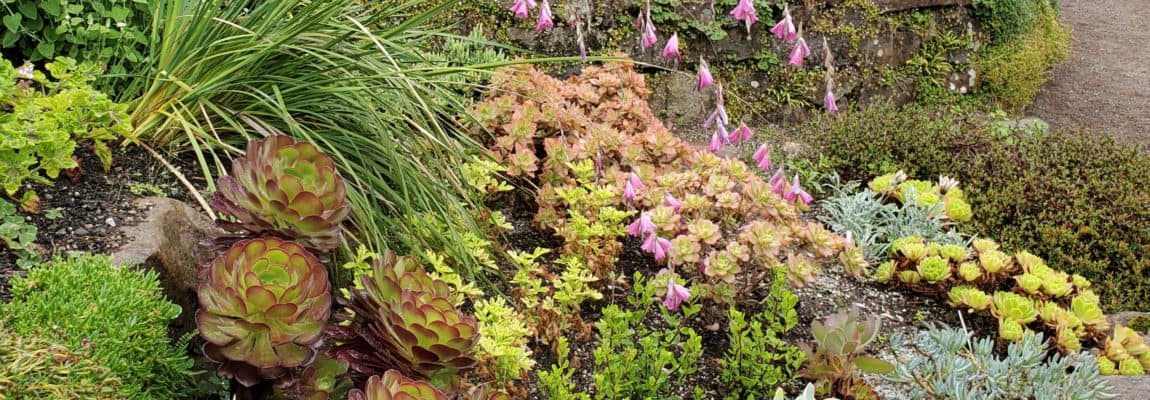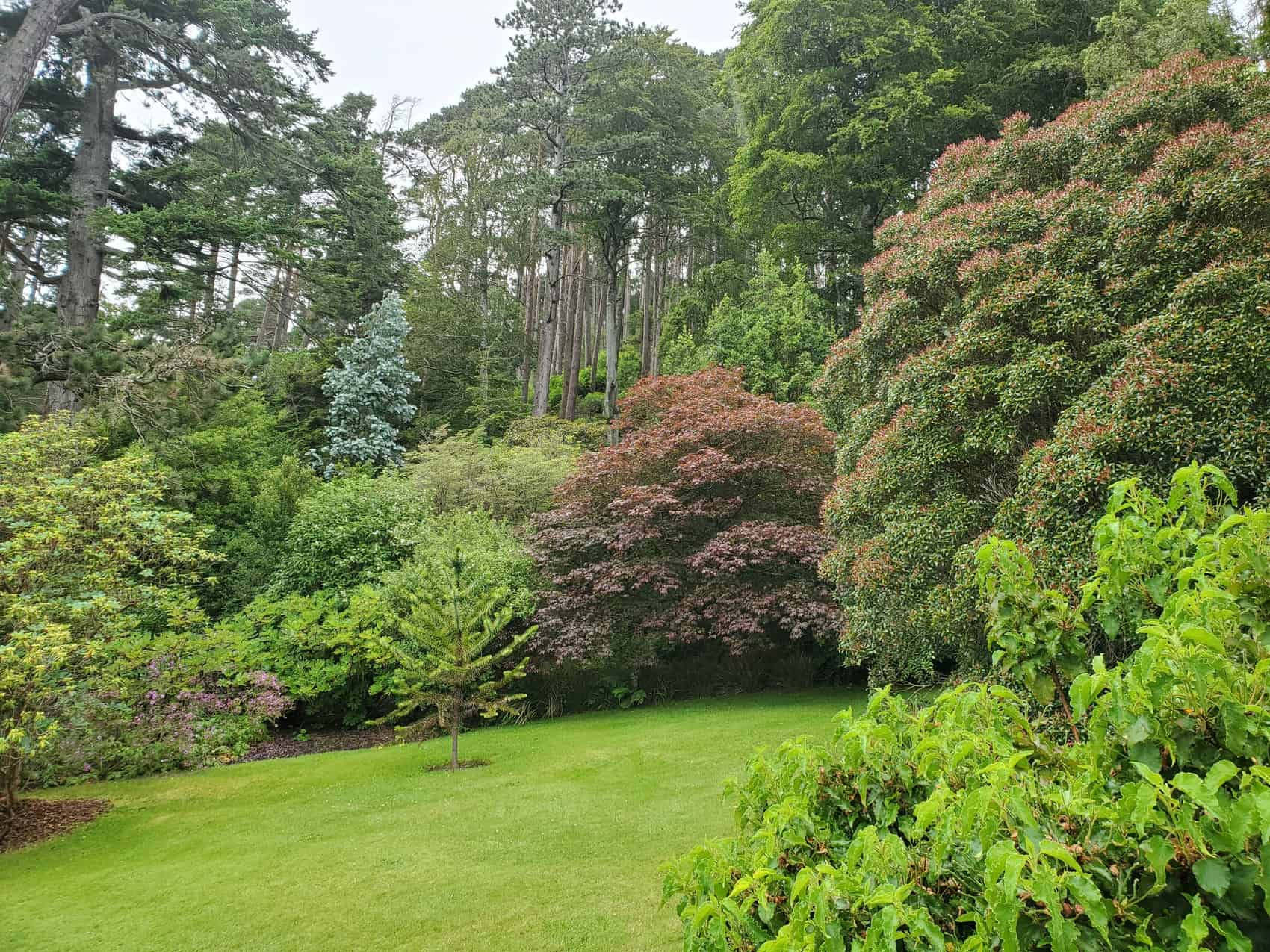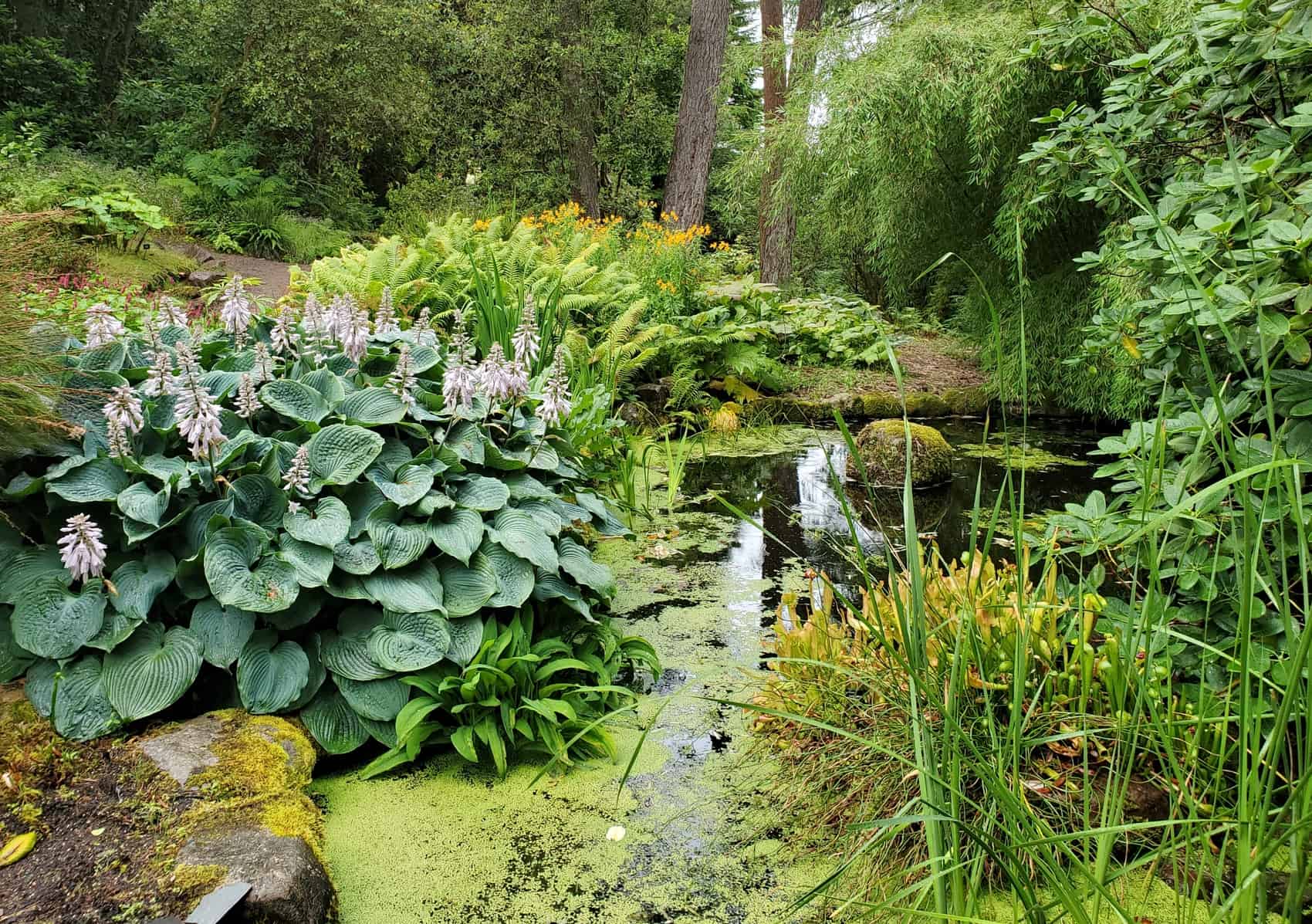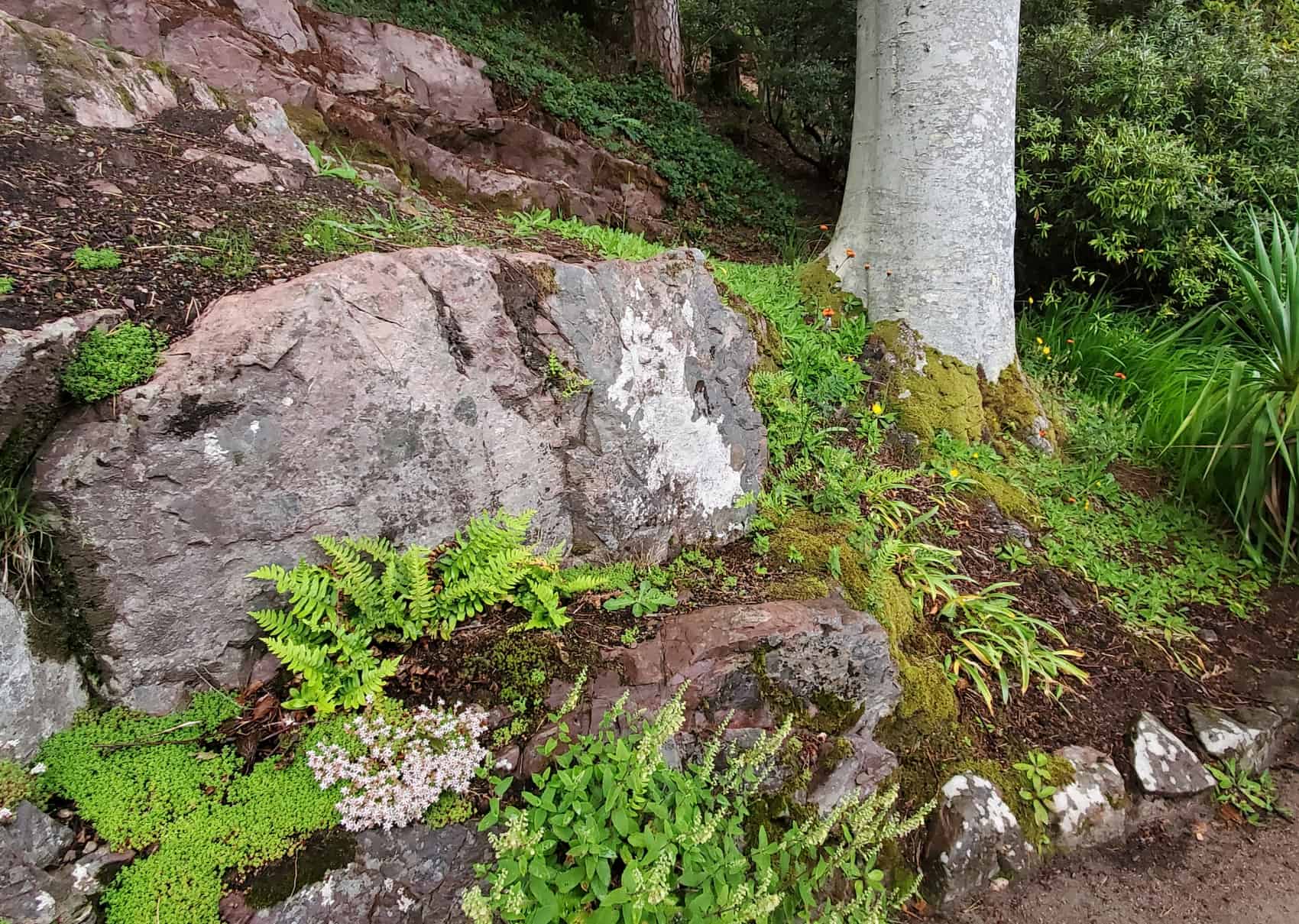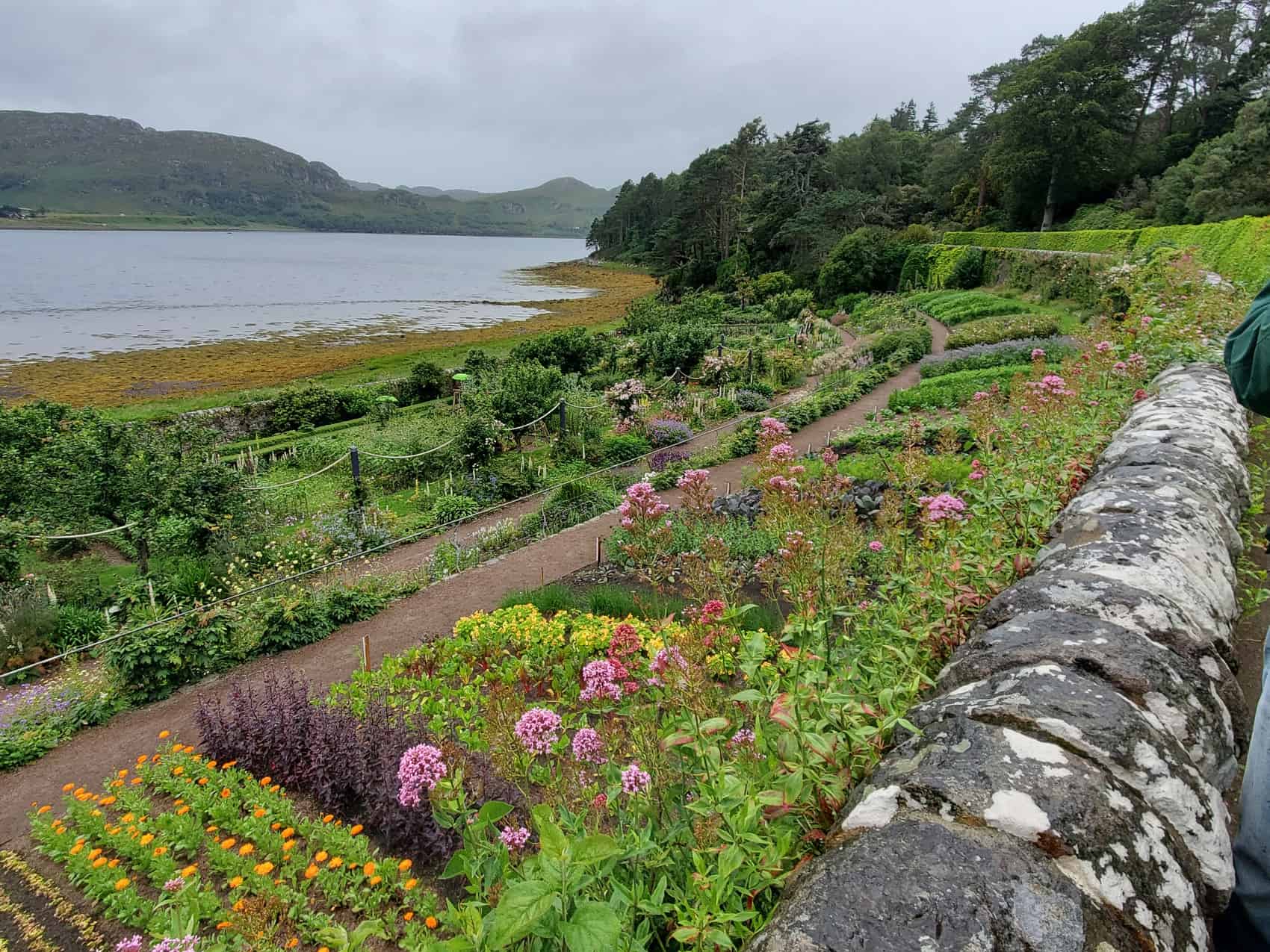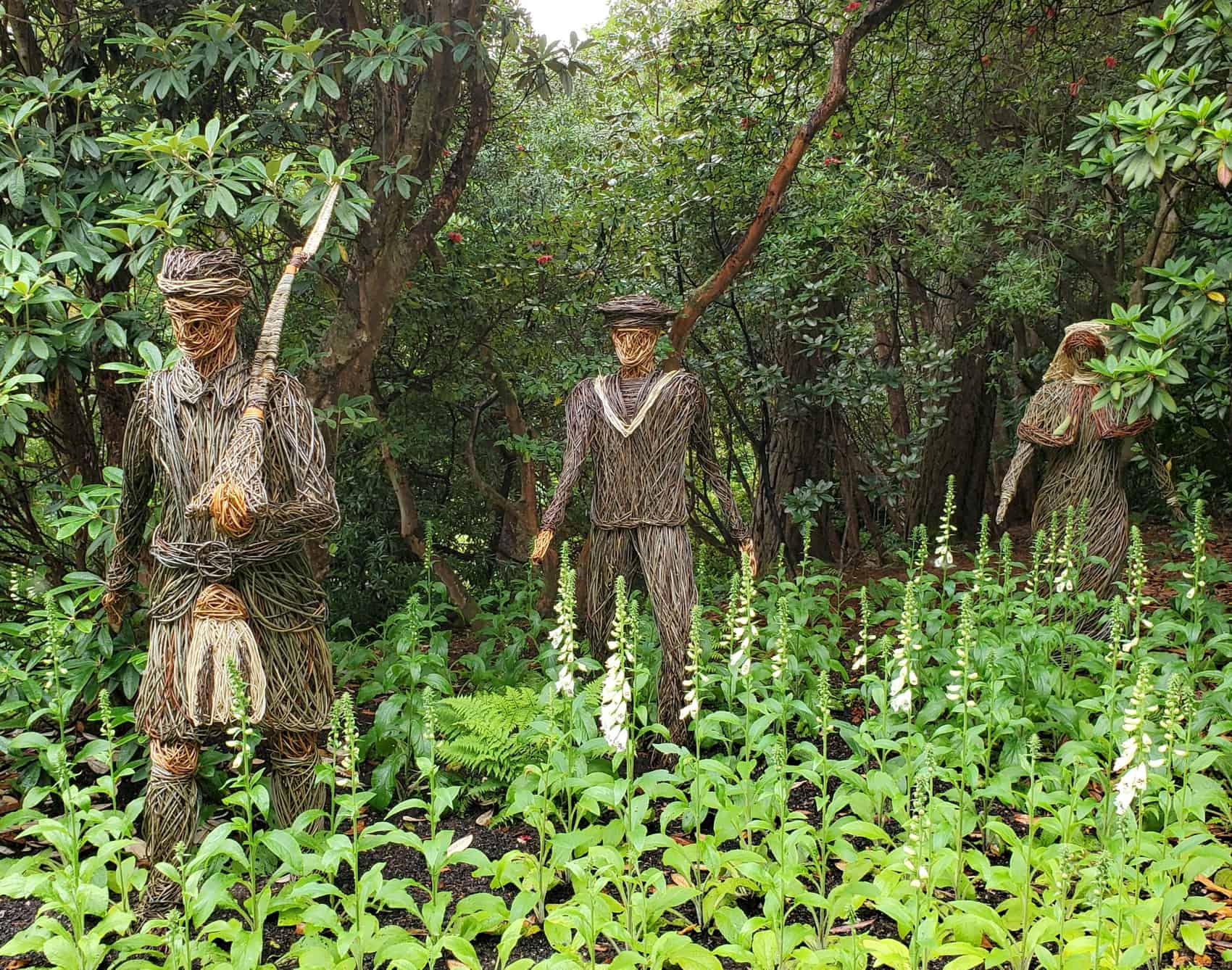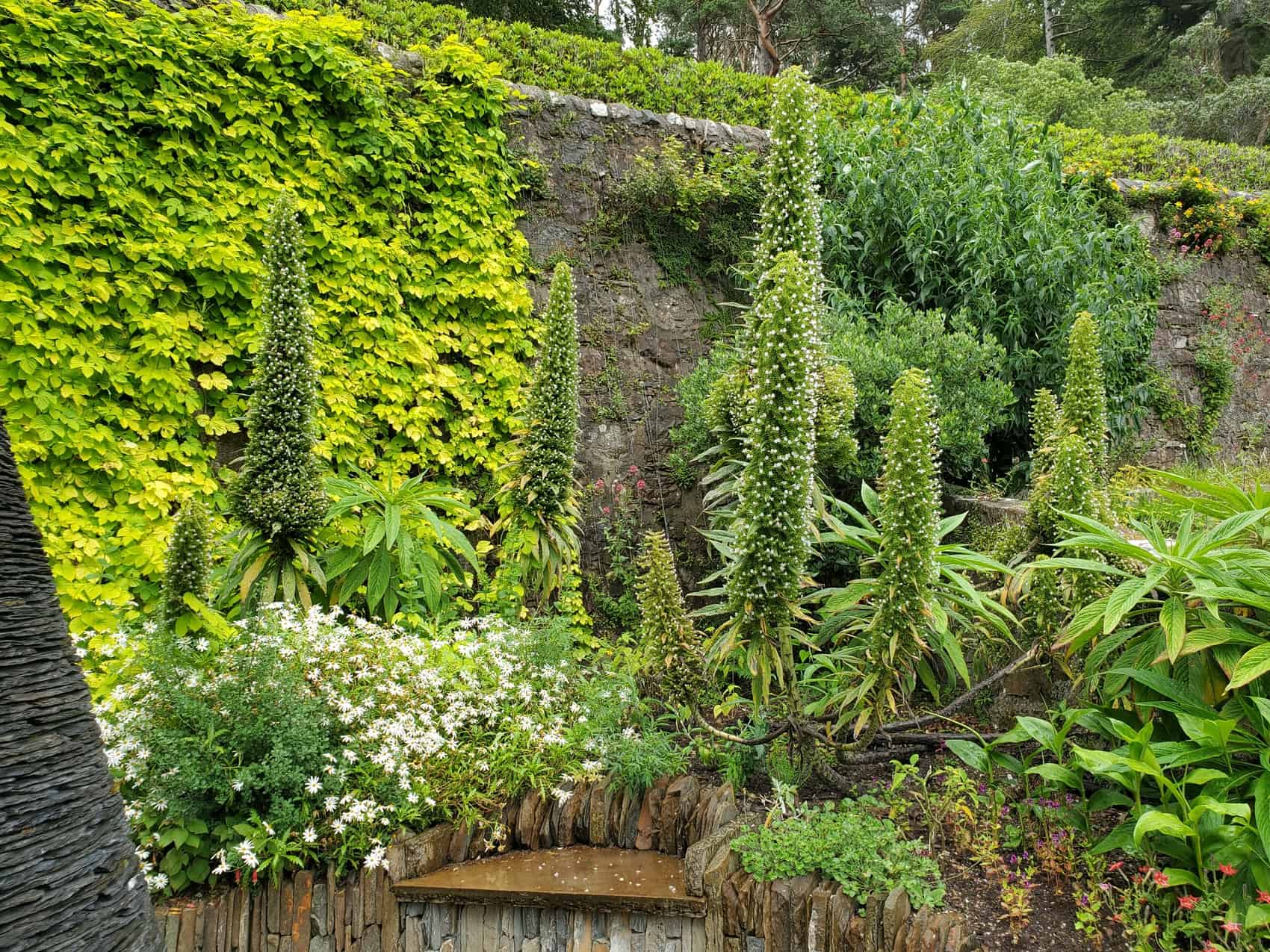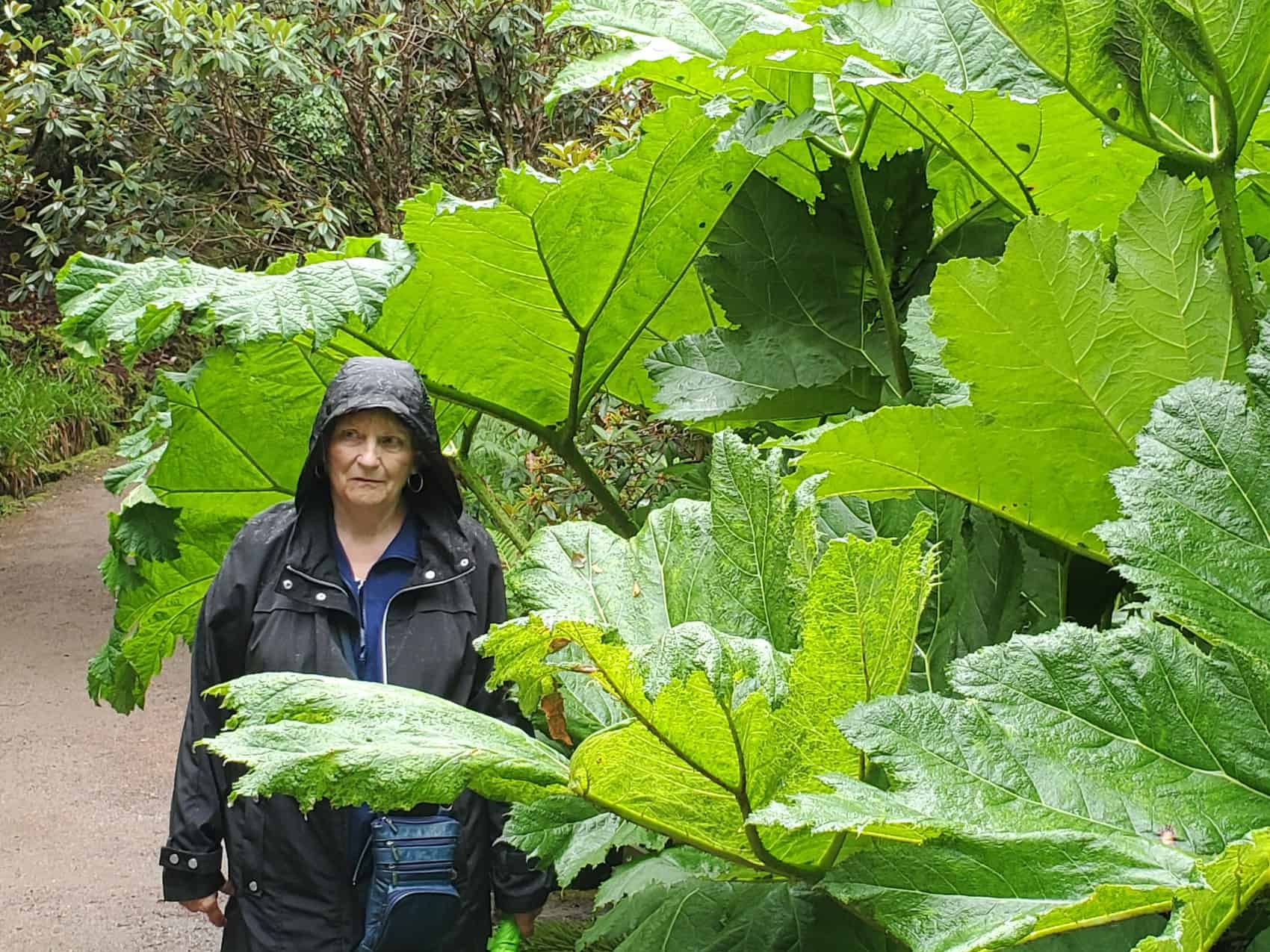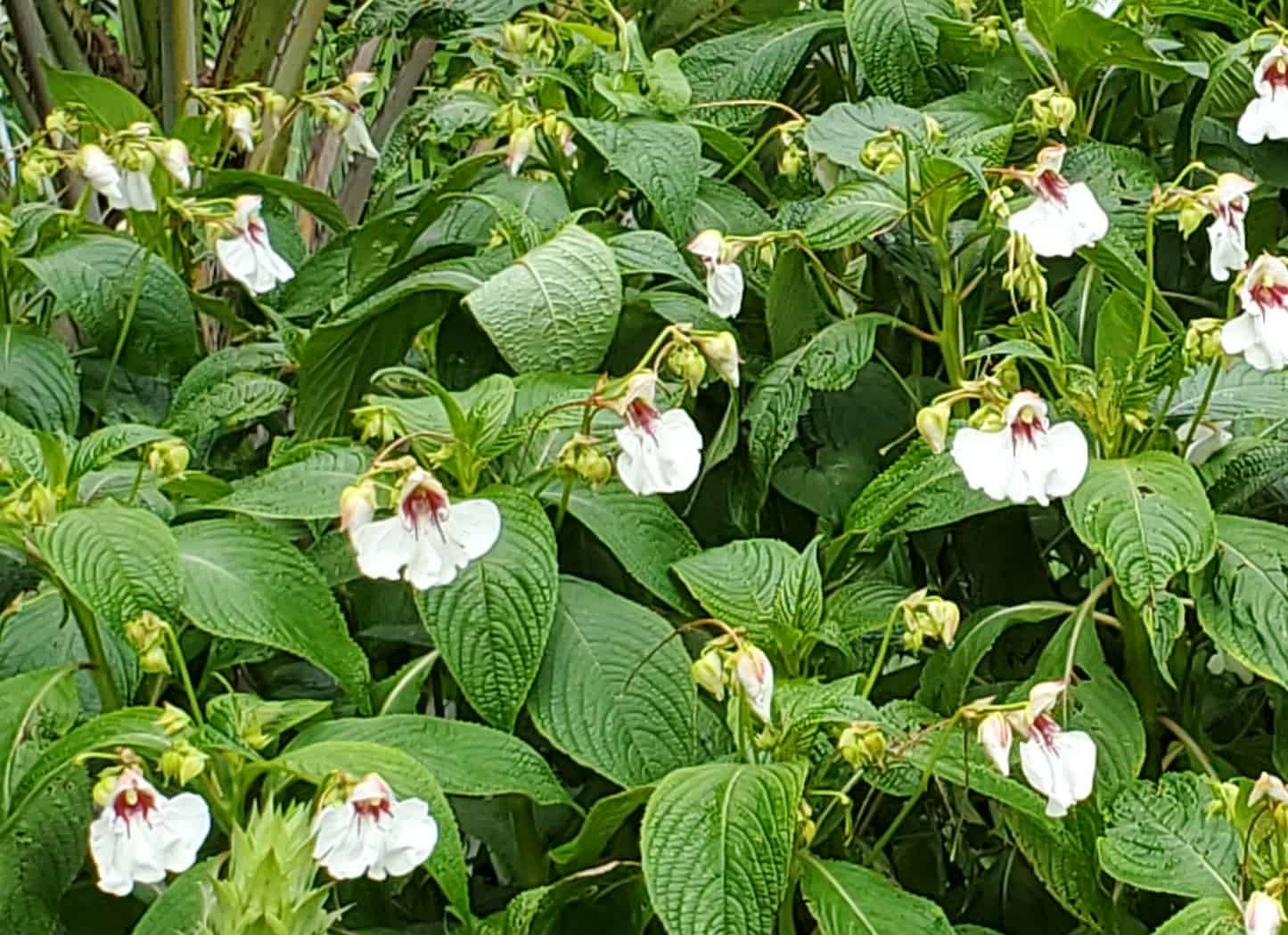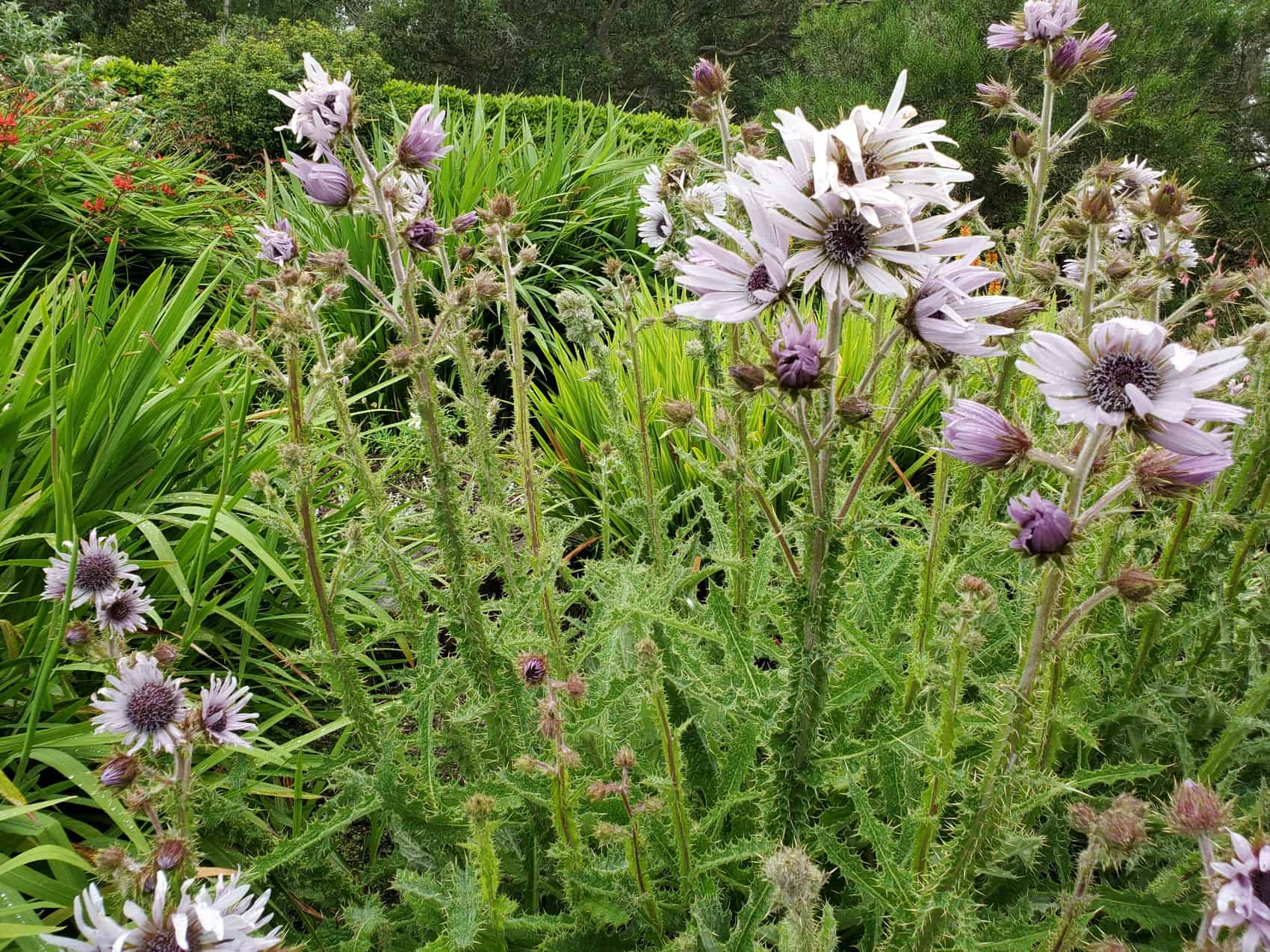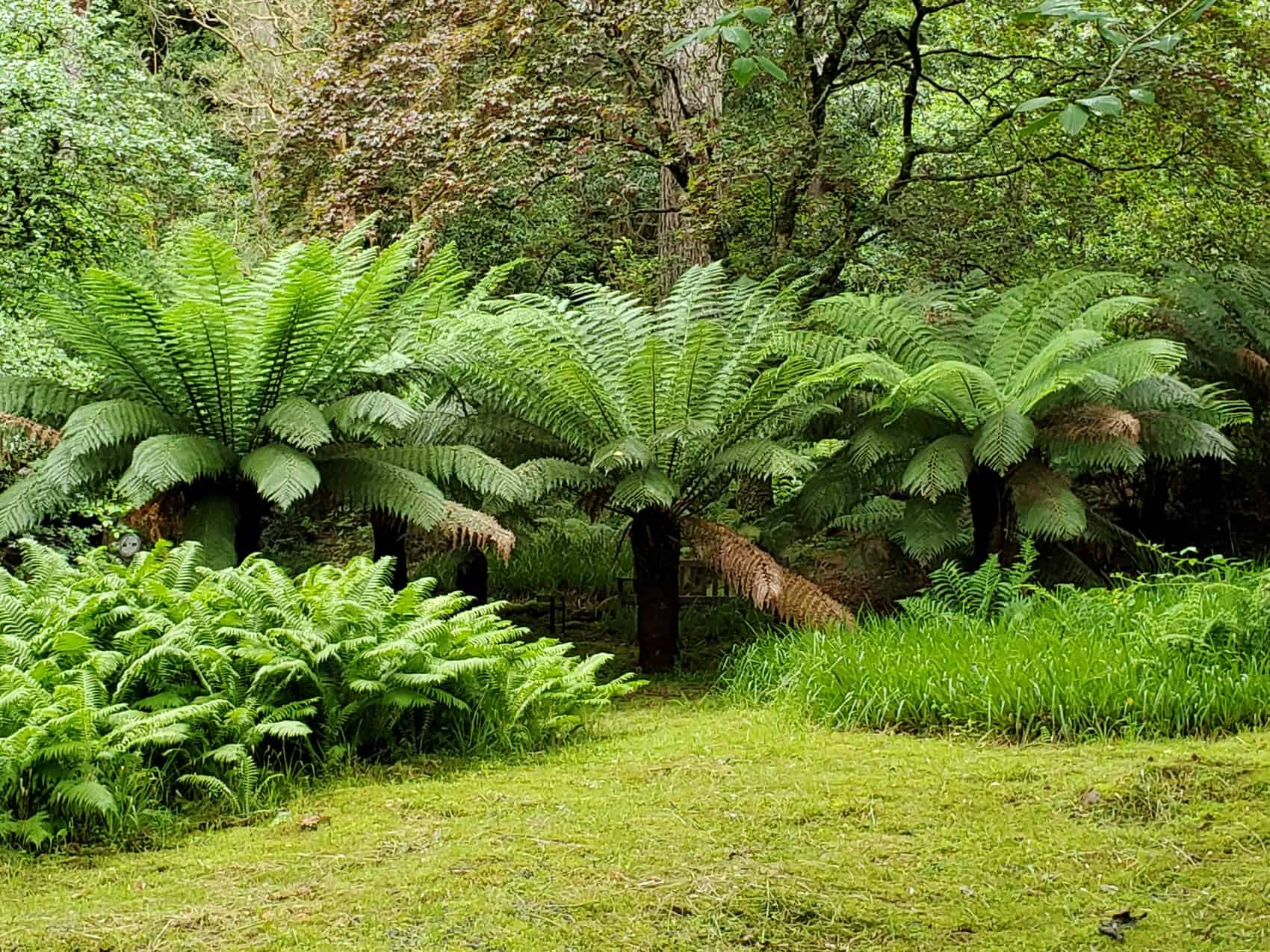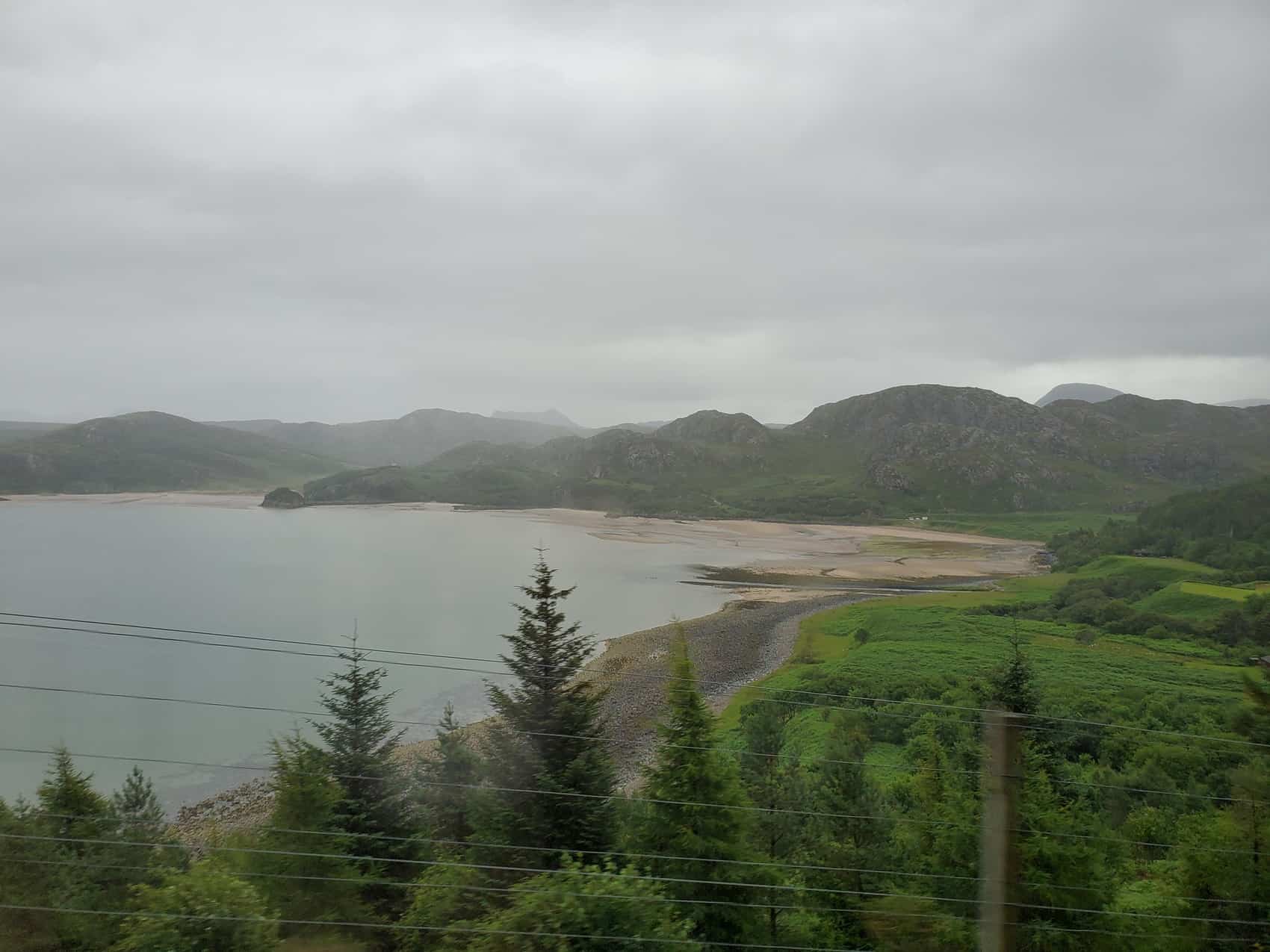July 17 –

We spent much of today on the bus, since we had a long way to go from Aviemore and back again. Our destination was Inverewe, near Gruinard Bay on the northwest coast of Scotland. The drive itself was delightful, winding through hills and past clear streams and lochs. Frequent rain hardly dampened our spirits.
Inverewe is an astounding 50-acre garden. Although it is located on the 57.8 parallel, the same latitude as Siberia, the Gulf Stream allows a wide variety of plants to flourish. The creator, Osgood MacKenzie, planted many trees to create a microclimate that allows even more protection.
Some of the plants we saw at Inverewe Gardens included Tasmanian eucalyptus, Himalayan rhododendron, New Zealand flax, tree ferns, and many other plants from around the world. These were laid out in huge gardens: woodland, walled, and pond settings. Our guide, Kathleen, provided information on the history, plants, and care of this remarkable garden.
Other stops on this long journey today included a walk on a sandy beach to pick up little shells (cockle shells) and pebbles, admiring the beauty all around (in spite of the drizzle that followed us all day).
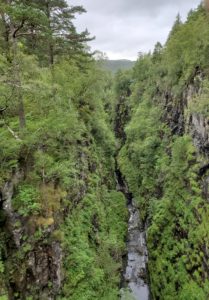
We also stopped at Corrieshalloch Gorge, where we walked a winding path through the woodland to the steep narrow gorge. A Victorian suspension bridge across it could hold up to six people at a time, and the brave among us crossed over for a better view.
Signs in this area are written in both Gaelic and English. Although English is the primary language of Scotland, efforts are being made to preserve the Gaelic language.
Tonight we must pack, as we leave Aviemore in the morning. Never enough time!

